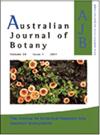评估 Phytophthora cinnamomi 对澳大利亚植物群的风险
IF 0.9
4区 生物学
Q4 PLANT SCIENCES
引用次数: 0
摘要
背景 Phytophthora cinnamomi Rands 是澳大利亚本地植被的一种破坏性病原体,经常对生态系统造成永久性破坏,并威胁到稀有易感物种的生存。尽管如此,有关 P. cinnamomi 对植物物种影响的许多信息仍未公布,大多数物种灭绝的风险也不得而知。目的 我们旨在对 P. cinnamomi 对澳大利亚本地植物造成的灭绝风险进行分类。方法 我们利用有关 P. cinnamomi 对植物影响的现有数据和个人知识、植物物种分布的空间数据以及 P. cinnamomi 的栖息地适宜性,将灭绝风险分为低、中、高或极高。主要成果 目前,澳大利亚有 65 种植物因受 P. cinnamomi 感染而面临极高的灭绝风险。Andersonia属、Banksia属、Darwinia属、Daviesia属、Epacris属、Gastrolobium属、Grevillea属、Hibbertia属、Isopogon属、Lambertia属、Latrobea属、Leucopogon属、Phebalium属和Styphelia属中有多个物种面临极高的灭绝风险,其中大部分出现在西澳大利亚州西南部。结论 现有数据证实了 P. cinnamomi 对澳大利亚植物区系造成的高风险,并确定了以前不知道会受影响的植物科的物种,突显了数据缺口(例如,缺乏有关兰花和禾本科植物的影响和风险的知识)。影响 要充分了解 P.cinnamomi(及其他疫霉属种)对澳大利亚植物区系的风险,还需要做更多的工作。本文章由计算机程序翻译,如有差异,请以英文原文为准。
Evaluating the risk to Australia’s flora from Phytophthora cinnamomi
Context Phytophthora cinnamomi Rands is a destructive pathogen of Australian native vegetation, often causing permanent damage to ecosystems and threatening the survival of rare, susceptible species. Despite that, much information about the effects of P. cinnamomi on plant species remains unpublished and the risk of extinction to most species is unknown. Aims We aimed to classify the risk of extinction from P. cinnamomi to Australian native plants. Methods We used available data and personal knowledge about P. cinnamomi effects on plants, spatial data on plant species distribution and habitat suitability of P. cinnamomi to assign an extinction-risk category of low, moderate, high or very high. Key results There are currently 65 plant species at a very high risk of extinction in Australia as a result of P. cinnamomi infection. The genera Andersonia, Banksia, Darwinia, Daviesia, Epacris, Gastrolobium, Grevillea, Hibbertia, Isopogon, Lambertia, Latrobea, Leucopogon, Phebalium and Styphelia have multiple species at a very high risk of extinction, most of which occur in south-western Western Australia. Conclusions The available data confirmed the high risk to the Australian flora from P. cinnamomi and identified species in plant families not previously known to be affected, highlighting data gaps (e.g. lack of knowledge about effects and risk in orchids and grasses). Implications Much more work is required to fully understand the risk from P. cinnamomi (and other Phytophthora species) to the Australian flora.
求助全文
通过发布文献求助,成功后即可免费获取论文全文。
去求助
来源期刊

Australian Journal of Botany
生物-植物科学
CiteScore
2.30
自引率
18.20%
发文量
26
审稿时长
6-12 weeks
期刊介绍:
Australian Journal of Botany is an international journal for publication of original research in plant science. We seek papers of broad interest with relevance to Southern Hemisphere ecosystems. Our scope encompasses all approaches to understanding plant biology.
Australian Journal of Botany is published with the endorsement of the Commonwealth Scientific and Industrial Research Organisation (CSIRO) and the Australian Academy of Science.
 求助内容:
求助内容: 应助结果提醒方式:
应助结果提醒方式:


